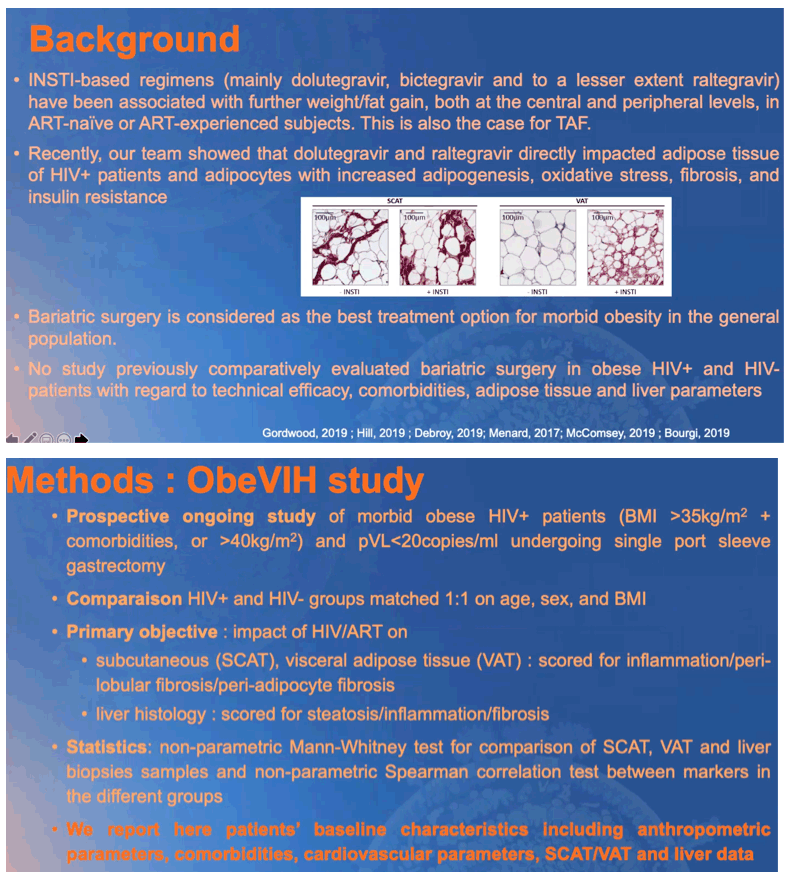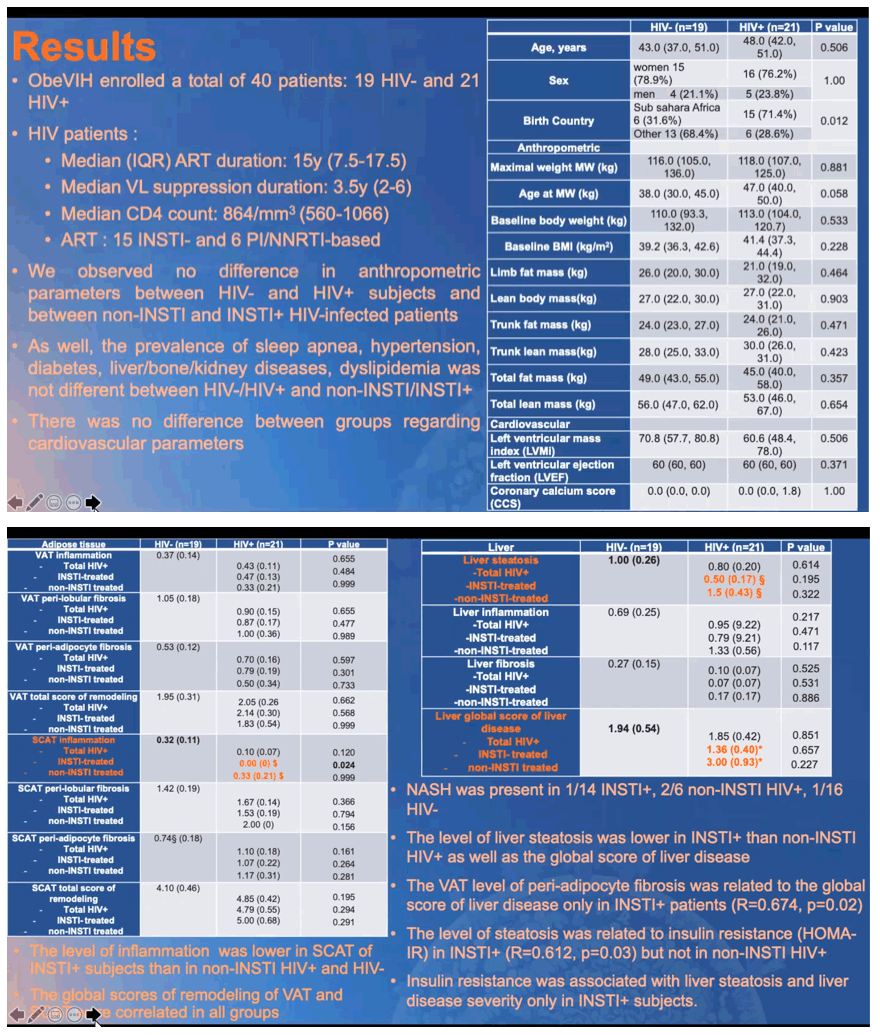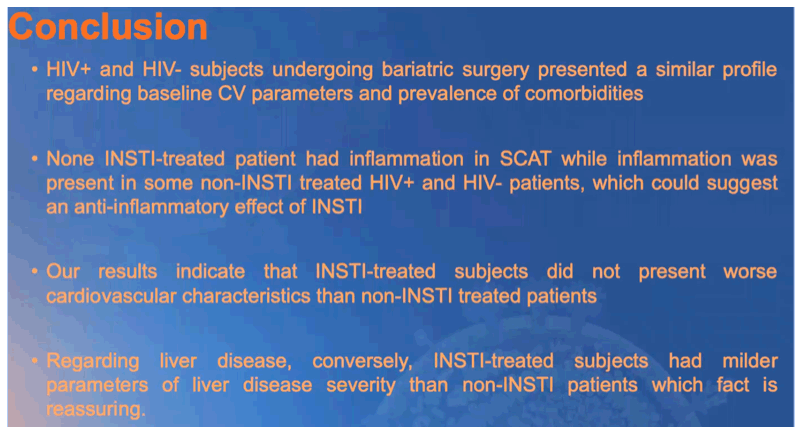 |
 |
 |
| |
CHARACTERISTICS OF HIV+ AND HIV- PATIENTS UNDERGOING BARIATRIC SURGERY: OBEVIH STUDY
|
| |
| |
CROI 2021 Mach 6-10 Reported by Jules Levin
Valerie Pourcher1, Yasmine Dudoit1, Jacqueline Capeau1, Franck Boccara1, Cathia Soulie1, Aude Ndoadoumgue2, Frederic Charlotte1, Veronique Bereziat3, Anne Genevieve Marcelin1, Gilles Peytavin1, Marie-Christine Boutron-Ruault4, Dominique Costagliola2, Christine Katlama1, Lambert Assoumou2, Guillaume Pourcher5
1Assistance Publique-Hôpitaux de Paris, Paris, France, 2INSERM 1136, Paris, France, 3INSERM, Paris, France, 4INSERM U 1018, Villejuif, France, 5Institut Mutualiste Montsouris, Paris, France
Background: Bariatric surgery (BS) is a major strategy to manage patients with morbid obesity which needs to be comparatively evaluated in HIV+ and HIV- patients.
Methods: ObeVIH is a prospective ongoing study of HIV+ patients with BMI >35kg/m2 with comorbidities, or >40kg/m2, and plasma HIV-RNA<20copies/ ml undergoing single port sleeve gastrectomy. We compared HIV+ and HIV- groups matched 1:1 on age, sex, and BMI and evaluated the impact of HIV/ ART on subcutaneous (SCAT), visceral adipose tissue (VAT) and liver histology. During BS, VAT/SCAT was recovered and scored for inflammation (macrophage crown-like structure)/peri-lobular fibrosis/peri-adipocyte fibrosis, and liver biopsies were scored for steatosis/inflammation/fibrosis. We report here patients' baseline characteristics including comorbidities and cardiovascular (CV) parameters: echocardiography findings (left ventricular mass index (LVMi) and ejection fraction (LVEF), and coronary calcium score (CCS).
Results: ObeVIH enrolled a total of 40 patients: 19 HIV- and 21 HIV+ with median (IQR) ART duration: 15y (7.5-17.5), viral suppression duration: 3.5y (2-6), and CD4 count: 864/mm3 (560-1066). ART was InSTI-Based in 15 and PI/NNRTI based in 6. The anthropometric, CV, adipose tissue and liver characteristics are presented in Table 1. No difference in the prevalence of sleep apnea, hypertension, diabetes, liver/bone/kidney diseases, dyslipidemia was observed. Moreover, there was no difference between groups for LVMi (p=0.506), LVEF (p=0.371), and CCS (p=1.00). In adipose tissue, the level of inflammation was lower in SCAT of InSTI-treated subjects than in HIV- (p=0.02) and non-InSTI- treated HIV+ (p=0.07). NASH was diagnosed by SAF score in 1/14 InSTI-treated, 2/6 non-InSTI treated HIV+ and 1/16 HIV-. The level of liver steatosis was lower in InSTI-treated than non-InSTI treated HIV+ (p=0.05). There was no overall difference between HIV+ and HIV- patients.
Conclusion: We report here that HIV+ and HIV- subjects undergoing BS presented a similar profile regarding baseline CV parameters and prevalence of comorbidities. However, there were differences between InSTI-and non-InSTI treated HIV+ in SCAT and liver histology. None InSTI-treated patients had inflammation in SCAT while it was present in some non-InSTI treated HIV+ and HIV- patients, which could suggest an anti-inflammatory effect of InSTI. Moreover, liver histology showed a milder profile with less steatosis in InSTI- treated than non-InSTI treated HIV+.



|
| |
|
 |
 |
|
|